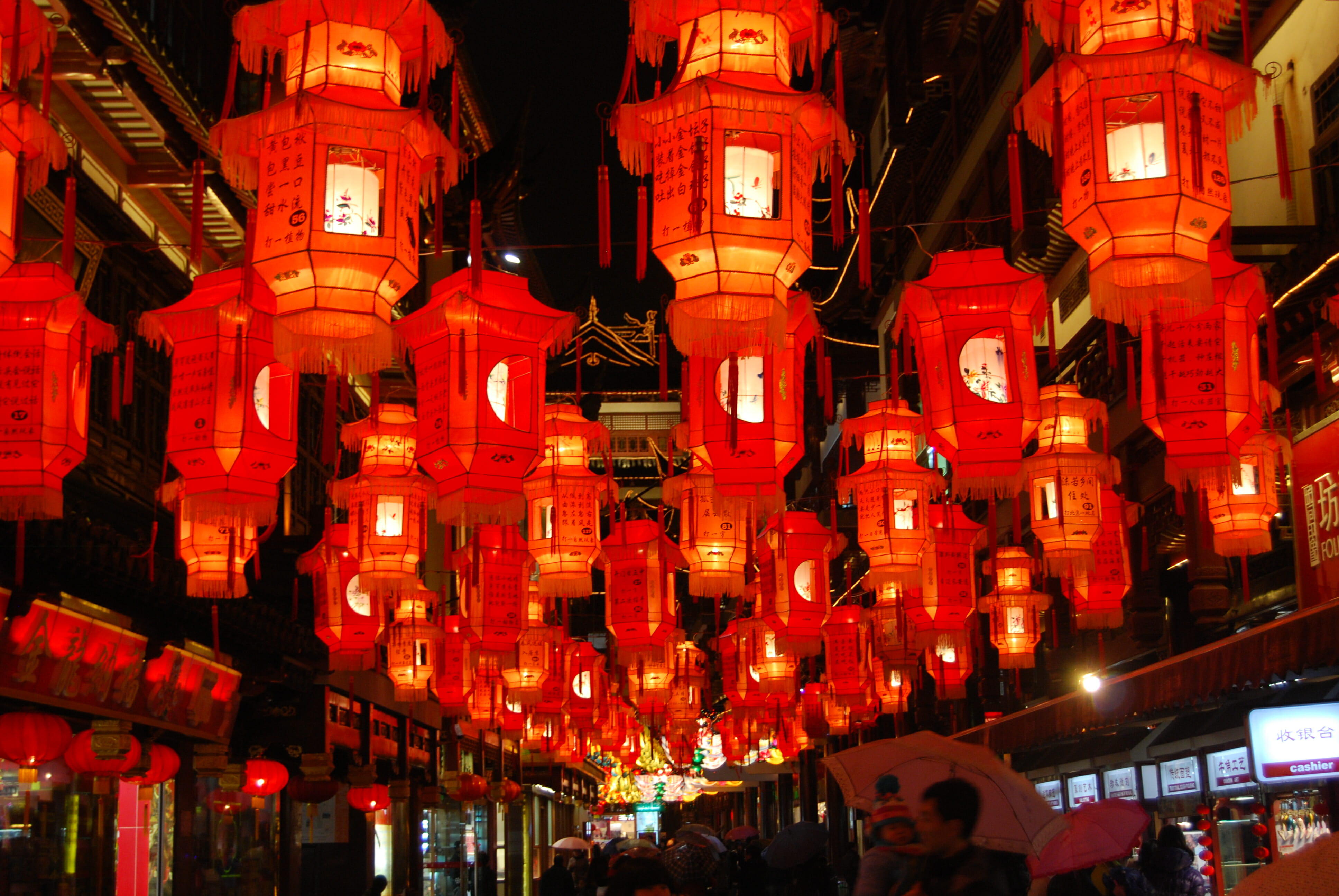Latern Festival in Shanghai, China
Every year, lasting for 15 days and starting from the first day of the lunar calendar (around the end of January or the beginning of February), people from countries all over the world celebrate Chinese New Year. 2017 is the Year of the Rooster, and it begins on January 28.
The 2017 Winter Formal theme this year is Chinese New Year, and it is set on the first day of the New Year, as planned out by the Student Council. With this year’s theme, it seems fitting to introduce some of the traditions and customs of this pinnacle of Chinese celebrations.
Fifteen Days of Celebration
Chinese New Year is actually comprised of 15 days of celebration rather than just 1 day. On the Eve of the New Year, relatives and close friends gather for an elaborate dinner known as “the New Year’s Eve dinner” (年夜饭, Nián yè fàn), comparable to Thanksgiving feasts here in the U.S. The final day of the new year is known as the Lantern Festival (元宵节, Yuán xiāo jié), when the streets of China are lit by thousands of lanterns hanging from above, which display riddles for contests which spectators try to guess in an attempt to win prizes.
The Zodiacs
You might ask, “Why rooster?” One of the best known features of Chinese New Year is the fact that each year is attached to an animal. Last year was the Year of the Monkey. These animals are determined by the Chinese Zodiac (十二生肖, Shí èr shēng xiào) consisting of twelve animals that cycle through in this order: Rat, Ox, Tiger, Rabbit, Dragon, Snake, Horse, Goat, Monkey, Chicken, Dog, Pig. Following this, next year will be the Year of the Dog.
Dumplings and Other Traditional Foods
When asked to list one Chinese food, the first things that comes to mind for most of us is likely dumplings, or potstickers. Dumplings (饺子, Jiǎo zi) are a staple of northern Chinese cuisine and are traditionally eaten at midnight on the first day of the New Year. Many more foods that are traditionally eaten too, which vary in different parts of the country practicing different customs.Common foods include mandarin oranges (橘子, Jú zi) which are a symbol of luck due to sounding like the word for luck in some dialects, rice pudding cake (年糕, Nián gāo) whose pronunciation is a homophone for “a more prosperous year,” and fish (鱼, Yú), which yet another homophone-this time for prosperity. There is even a saying that goes along with this, which is the phrase, “Let there be surpluses every year” (年年有余, nián nián yǒu yú) which sounds like: “Let there be fish every year!”
Dragon and Lion Dances
Each year, the upper school Chinese classes put together spectacular Chinese dances (dragon and fan) to perform at assembly. In an standard Chinese New Year Celebration or parade, staples include the Dragon Dance (舞龙, wǔ lóng), the Lion Dances (舞狮, wǔshī), and other folk dances- performed to bring good luck to the community.
Red Envelopes
Those red envelopes we receive every year during Chinese New Year at school filled with pens and candy are similar to red envelopes children receive in China during the New Year known as Hóng bāo (红包). They traditionally contain money, often small amounts, and it is customary for any unmarried individuals to receive these red envelopes on New Year’s Day for good luck, and to give them to the elderly out of respect. So when you are deciding on how to ask someone to Winter Formal, consider using a red envelope for good luck (even if it is before New Year’s Day), and if you’ve already asked, maybe give one to your date at the dance!
*If you are in need of an envelope, ask one of the Chinese teachers and they are sure to have an abundant supply handy!








